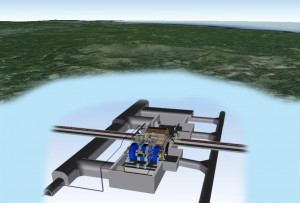In the charge drafted by the ILCSC nearly two years ago, the responsibility of the associate director for physics and detectors of the Linear Collider Collaboration (LCC) was stated as follows:
“He/she will coordinate the world-wide effort to develop advanced detectors that are appropriate for either accelerator technology…Initially, the Associate Director will focus on
- Building the physics case for a linear collider;
- Coordinating R&D on advanced detector technologies;
- Developing validated detector concepts for both accelerator technologies.”
Here, ‘both accelerator technologies’ of course mean the ILC and the CLIC. The situation, however, has changed dramatically since the charge was drafted due to the positive developments for the ILC. The main goal of the LCC now is to realise the ILC, and accordingly the last of the three goals above should be updated to say ‘Preparing the way for collaboration formation and detector construction of the ILC while promoting synergy between ILC and CLIC detector activities’. The LCC physics and detector directorate will define benchmarks and review the progress of the ILC detector activities, but it will not do the same for the CLIC detector activities that have a different time scale and urgency.
The executive board is the core group of the LCC physics and detector directorate. All key decisions within the LCC physics and detector directorate will be made by this group. Apart from the associate director, it consists of representatives from the detector groups, conveners of working groups and regional contacts. Currently, the working groups are physics, detector R&D, machine-detector interface, software and computing and ILC parameters. Additional working groups may be added as needed. Let me briefly describe highlights of these working groups.
The machine-detector interface working group, led by Karsten Büßer, coordinates the activities such as the design of the detector hall and the integration of detectors within it. Currently, the group’s focus is on site-specific studies for the Kitakami site.
The detector R&D liaison, led by Maksym Titov, keeps track of detector R&D efforts relevant to linear colliders. Detector R&D groups are mostly highly independent groups with their own funds, and they do not wish to be controlled or even coordinated by a higher organisation. After intensive discussions with key R&D groups, we have agreed to have one liaison and a deputy. They are now compiling all the detector R&D efforts related to linear colliders so that new comers can identify areas they might be able to contribute.
The software and computing working group, led by Norman Graf, coordinates software tools common to detector groups, and evaluates computing needs. They are now figuring out the profile of computing needs from now up to the real experiments. Such information is needed for the design of the central campus.
The ILC parameters working group is a joint working group of the ILC accelerator group and the ILC physics and detector group, led by Jim Brau and Nick Walker. This working group is specific to the ILC, and the immediate goal is to provide information for the initial staging scenario of the ILC.
The conveners of the physics working group will soon be selected. The physics working group is the central body in formulating the physics case for the linear collider and its implications, and the deputy director of the LCC sits as an observer.
Independently of the executive board, there exists the physics and detector advisory panel that reports directly to the associate director. The chair is defined to be Paul Grannis; the panel itself, however, is now under construction, and I would like to talk about it in the near future. At a certain point in near future, there will be a review on the progress of the ILC detector groups towards real collaborations, and this panel will be the body to execute such a review. It will also look at the synergy between the ILC and CLIC detector efforts.
Most of the working groups described above have representatives from the CLIC detector and physics group, and the executive board includes a member representing them also. This is simply a manifestation of close collaborations at many levels between the two communities, and the LCC physics and detector directorate will encourage and promote such collaborations. One of the most important goals of the LCC physics and detector directorate is to keep the linear collider communities together.



Recent Comments